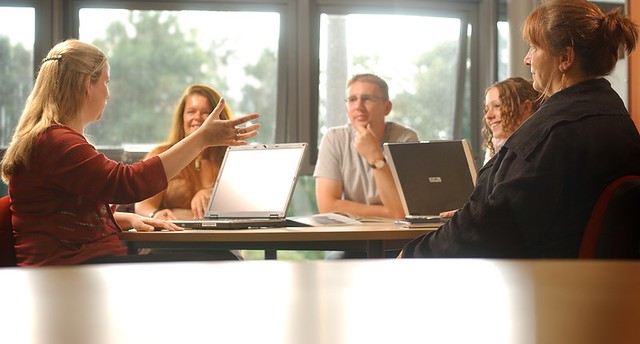One of the best ways to set yourself up for a great semester is to take advantage of the first day of class. Many faculty fail to effectively use the first day, but doing some of these small tips can be a game changer for you. In today’s post, I will highlight some of the ways you should be preparing for the first day of class.

The First Day of Class
Let’s consider one of the biggest impacts on your experience teaching: the first day of class. You may be tempted to take attendance, give out your syllabus, and let your students go early. Instead, take James Lang’s (2016) advice to take advantage of the first day of class by using this unique opportunity to set the stage for the rest of the semester. Truly, you only get one chance to make a first impression. Below are some specific strategies to help make it a great one.
Arrive early: Give yourself time to set up the tables and chairs if they are moveable, get yourself prepared and comfortably situated, and write any necessary messages on the board or turn on and set up the projector and computer.
Learn students’ names as quickly as possible: Start learning the names of your students (assuming the class is not very large). A photo roster, which many institutions allow faculty to download, can help with this both before and during class. Learning their names is a crucial first step in getting to know your students. The ability to call students by name communicates respects and helps them feel recognized as individuals. Additionally, using names may help draw out and involve quieter students in class discussions (Glentz, 2014).
Student introductions: Have students introduce themselves. Have them include something class related, such as: Why did you sign up for this class? What experience do you have relevant to the class content? What do you hope to learn? After you have a few students introduce themselves, pause and asked another member of the class to name all the students who have been introduced. You can then repeat this process until all students have been introduced and have had their names recalled. Conversely, you can have students write their names and a few facts about themselves, including any other pertinent information they need you to know, on a notecard (i.e., they are a student athlete, they have a learning disability, they have a subject sensitivity, etc.). This process creates a set of student flash cards you can use to learn names or reference later on in the term. Of course, if your class is larger than 25-30 students, this may be hard to accomplish, but I still encourage you to get to know the students as much as possible.
Set the tone: This is crucial to the success of a class. You do not have to have a full class meeting, necessarily, but introduce students to the way class will be taught and to your style of teaching. If your class will include lectures with brief discussions, do at least a mini version of this on the first day.
Learn students’ prior knowledge or experience: Create an activity to learn what prior knowledge or experience your students have related to your class. This information will prove useful for preparing future class sessions.
This post is an excerpt from my book, How to Get Tenure: Strategies for Successfully Navigating the Process (Routledge, 2019).

